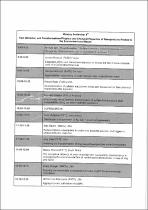 ResearchSpace
ResearchSpace
The interactive influence of water chemistry and nanoparticle characteristics in determining the environmental fate of metal-based nanoparticles: a case of nAg and nZnO
JavaScript is disabled for your browser. Some features of this site may not work without it.
- ResearchSpace
- →
- Research Publications/Outputs
- →
- Conference Publications
- →
- View Item
| dc.contributor.author |
Thwala, Melusi

|
|
| dc.contributor.author |
Radebe, N

|
|
| dc.contributor.author |
Tancu, Y

|
|
| dc.contributor.author |
Musee, N

|
|
| dc.date.accessioned | 2014-12-22T07:32:59Z | |
| dc.date.available | 2014-12-22T07:32:59Z | |
| dc.date.issued | 2014-09 | |
| dc.identifier.citation | Thwala, M., Radebe, N., Tancu, Y., and Musee, N. 2014. The interactive influence of water chemistry and nanoparticle characteristics in determining the environmental fate of metal-based nanoparticles: a case of nAg and nZnO. In: 9th ICEENN Conference, Columbia, USA, 7-11 September 2014 | en_US |
| dc.identifier.uri | http://hdl.handle.net/10204/7820 | |
| dc.description | 9th ICEENN Conference, Columbia, USA, 7-11 September 2014 | en_US |
| dc.description.abstract | This study investigated the stability of nAg (40-60 nm) and nZnO (10-130 nm) NPs in Hoagland's Medium of half (50HM) and full (100HM) strengths as representative of complex water. The hydrodynamic size dynamics were studied using the Transmission Electron Microscope (TEM) and Nanoparticle Tracking Analysis (NTA) whilst dissolution was quantified using ICP-MS after centrifugal ultrafiltration. Both NP types underwent significant (p < 0.05) size growth on introduction HM solutions of both strengths. In 100HM agglomeration was more severe than in 50 HM, significantly differing in most instances. Although a much notable loss of NPs in suspension was generally expected in 100HM as a result of the formation of larger agglomerates, this was not the case. The NP concentration (number/mL) in 100HM remained relatively higher than in 50HM, more so for nAg. Such an observation suggested a stabilising effect in high ionic strength (IS) 100HM, such an effect was confirmed by lower dissolution in 100HM relative to 50HM. However, the dissolution of citrate coated nAg (cit-nAg: 10 and 40 nm) contradicted the stabilising effect of 100HM observed uncoated nAg, as cit-nAg were more stable in 50HM as confirmed by lower dissolution rate and higher NP concentration relative to 100HM. The results obtained demonstrate the complex nature of NPs transformation in the environment whereby a one-glove-fit-all approach does not apply. The study raises questions with respect to data obtained with standardised NPs under highly controlled lab environments and calls for a move towards environmental realism of life cycle assessments with nano-enabled products. | en_US |
| dc.language.iso | en | en_US |
| dc.relation.ispartofseries | Workflow;13838 | |
| dc.subject | Nanoparticles | en_US |
| dc.subject | Nanosilver | en_US |
| dc.subject | Zinc oxide | en_US |
| dc.subject | Hoagland's medium | en_US |
| dc.title | The interactive influence of water chemistry and nanoparticle characteristics in determining the environmental fate of metal-based nanoparticles: a case of nAg and nZnO | en_US |
| dc.type | Conference Presentation | en_US |
| dc.identifier.apacitation | Thwala, M., Radebe, N., Tancu, Y., & Musee, N. (2014). The interactive influence of water chemistry and nanoparticle characteristics in determining the environmental fate of metal-based nanoparticles: a case of nAg and nZnO. http://hdl.handle.net/10204/7820 | en_ZA |
| dc.identifier.chicagocitation | Thwala, Melusi, N Radebe, Y Tancu, and N Musee. "The interactive influence of water chemistry and nanoparticle characteristics in determining the environmental fate of metal-based nanoparticles: a case of nAg and nZnO." (2014): http://hdl.handle.net/10204/7820 | en_ZA |
| dc.identifier.vancouvercitation | Thwala M, Radebe N, Tancu Y, Musee N, The interactive influence of water chemistry and nanoparticle characteristics in determining the environmental fate of metal-based nanoparticles: a case of nAg and nZnO; 2014. http://hdl.handle.net/10204/7820 . | en_ZA |
| dc.identifier.ris | TY - Conference Presentation AU - Thwala, Melusi AU - Radebe, N AU - Tancu, Y AU - Musee, N AB - This study investigated the stability of nAg (40-60 nm) and nZnO (10-130 nm) NPs in Hoagland's Medium of half (50HM) and full (100HM) strengths as representative of complex water. The hydrodynamic size dynamics were studied using the Transmission Electron Microscope (TEM) and Nanoparticle Tracking Analysis (NTA) whilst dissolution was quantified using ICP-MS after centrifugal ultrafiltration. Both NP types underwent significant (p < 0.05) size growth on introduction HM solutions of both strengths. In 100HM agglomeration was more severe than in 50 HM, significantly differing in most instances. Although a much notable loss of NPs in suspension was generally expected in 100HM as a result of the formation of larger agglomerates, this was not the case. The NP concentration (number/mL) in 100HM remained relatively higher than in 50HM, more so for nAg. Such an observation suggested a stabilising effect in high ionic strength (IS) 100HM, such an effect was confirmed by lower dissolution in 100HM relative to 50HM. However, the dissolution of citrate coated nAg (cit-nAg: 10 and 40 nm) contradicted the stabilising effect of 100HM observed uncoated nAg, as cit-nAg were more stable in 50HM as confirmed by lower dissolution rate and higher NP concentration relative to 100HM. The results obtained demonstrate the complex nature of NPs transformation in the environment whereby a one-glove-fit-all approach does not apply. The study raises questions with respect to data obtained with standardised NPs under highly controlled lab environments and calls for a move towards environmental realism of life cycle assessments with nano-enabled products. DA - 2014-09 DB - ResearchSpace DP - CSIR KW - Nanoparticles KW - Nanosilver KW - Zinc oxide KW - Hoagland's medium LK - https://researchspace.csir.co.za PY - 2014 T1 - The interactive influence of water chemistry and nanoparticle characteristics in determining the environmental fate of metal-based nanoparticles: a case of nAg and nZnO TI - The interactive influence of water chemistry and nanoparticle characteristics in determining the environmental fate of metal-based nanoparticles: a case of nAg and nZnO UR - http://hdl.handle.net/10204/7820 ER - | en_ZA |





